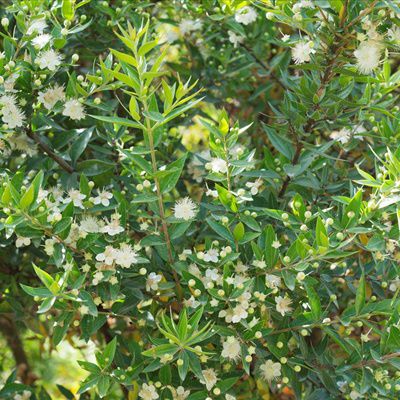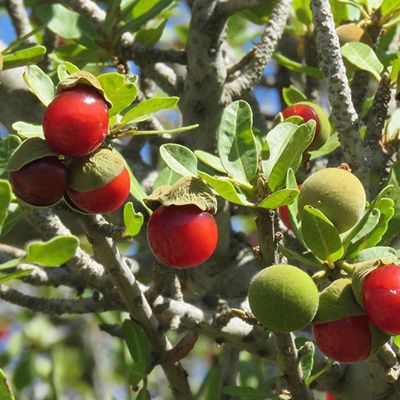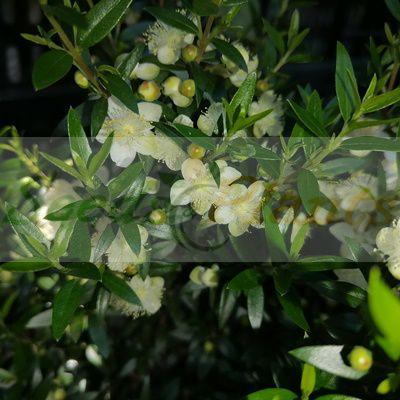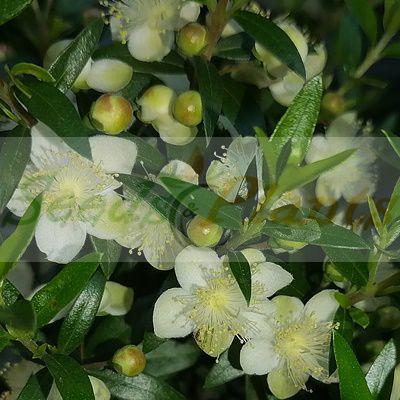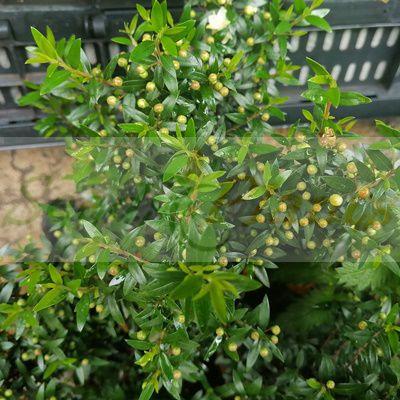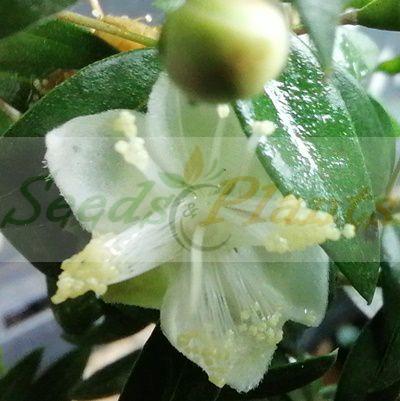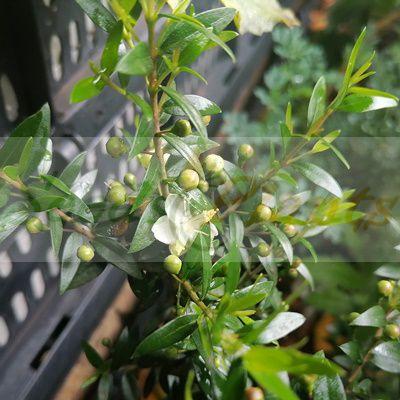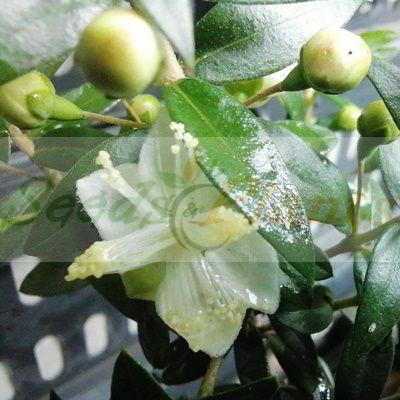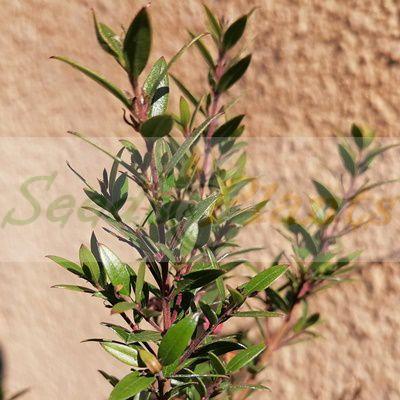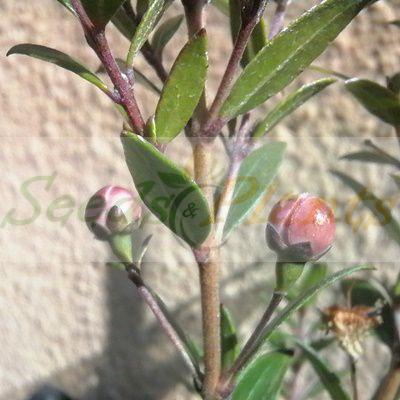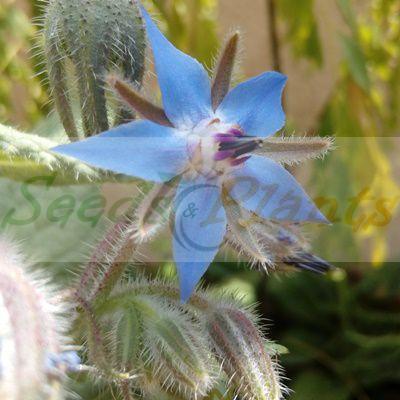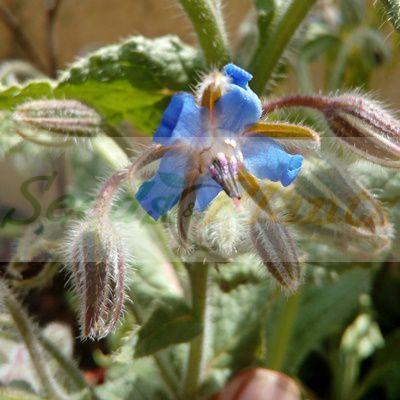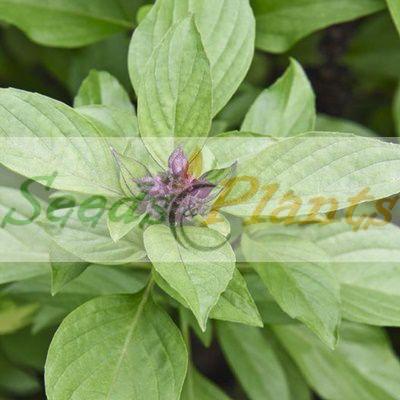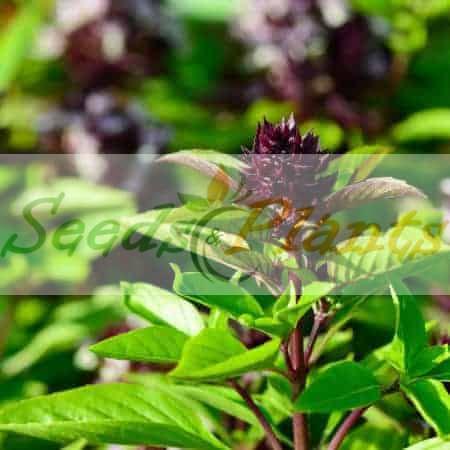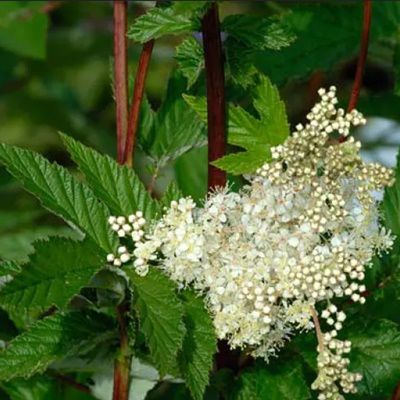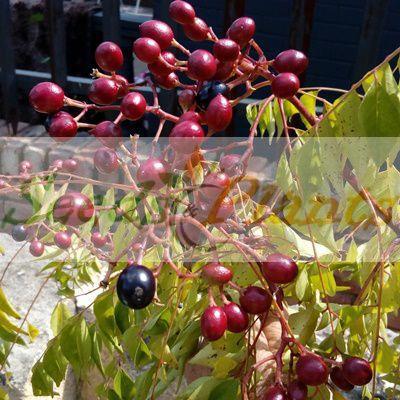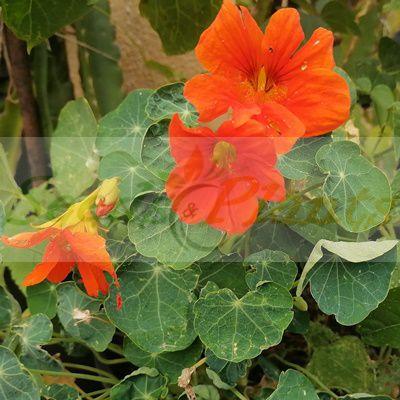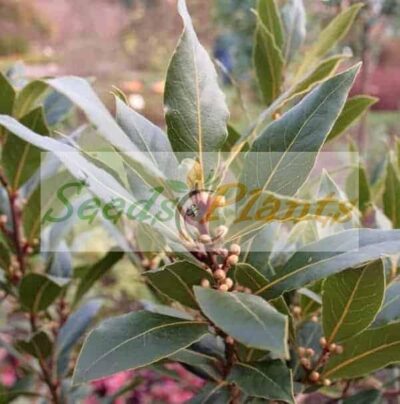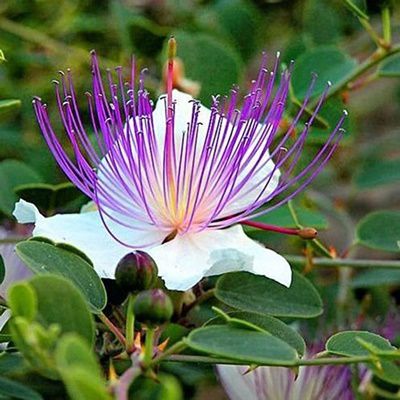🍃 Culinary Quick Facts
Culinary Info
- 🌍 Origin / Region: Mediterranean
- 🍽️ Culinary Use: Cooking, Garnish, Liqueurs/Wines, Pepper Substitute, Rubs
- 🥗 Edible Part: Berry, Buds, Flower, Leaf
- 😋 Flavor Profile: Citrusy
Medicinal Info
- 🌿 Medicinal Part: Berry, Flower, Leaf
- 🍵 Herbal Preparation: Decoction, Essential Oil, Infusion / Tea, Ointments/Creams, Paste, Powder
- ⚕️ Healing System: European Traditional Medicine, Unani System of Medicine
Growth Traits
- 🌱 Life Cycle: Perennial
- 🌾 Plant Type: Shrub
- 🔁 Fruiting Needs: Needs Only 1 Plant
- 🦋 Pollinator Method: Attracts Bees, Attracts Beetles, Self-pollinating
- 🪴 Growth Habit: Bushy, Rounded, Slow Growing
- 🌸 Flower Color: Creamy White
Growing Requirements
- 🌞 Sun Exposure: Full Sun, Partial Shade
- 💧 Water Needs: Avoid Overwatering, Moderate Water, Water Deeply
- ☀️ Growing Conditions: Drought Tolerant, Frost Tolerant, Heat Tolerant, Salt-tolerant, Wind Tolerant
- 🟤 Soil Preference: Clay, Loam, Moderately Fertile, Saline, Sandy, Tolerant of most soils, Well-Drained
Dwarf Myrtle – 5 Seeds
(Myrtus communis ‘Compacta’)
R50.00
Dwarf Myrtle has both culinary and medicinal uses. Can be grown in containers.
Indoor Sowing: Early Spring.
Direct Sowing: Early Spring and Autumn.
In stock
🍃 Culinary Quick Facts
Culinary Info
- 🌍 Origin / Region: Mediterranean
- 🍽️ Culinary Use: Cooking, Garnish, Liqueurs/Wines, Pepper Substitute, Rubs
- 🥗 Edible Part: Berry, Buds, Flower, Leaf
- 😋 Flavor Profile: Citrusy
Medicinal Info
- 🌿 Medicinal Part: Berry, Flower, Leaf
- 🍵 Herbal Preparation: Decoction, Essential Oil, Infusion / Tea, Ointments/Creams, Paste, Powder
- ⚕️ Healing System: European Traditional Medicine, Unani System of Medicine
Growth Traits
- 🌱 Life Cycle: Perennial
- 🌾 Plant Type: Shrub
- 🔁 Fruiting Needs: Needs Only 1 Plant
- 🦋 Pollinator Method: Attracts Bees, Attracts Beetles, Self-pollinating
- 🪴 Growth Habit: Bushy, Rounded, Slow Growing
- 🌸 Flower Color: Creamy White
Growing Requirements
- 🌞 Sun Exposure: Full Sun, Partial Shade
- 💧 Water Needs: Avoid Overwatering, Moderate Water, Water Deeply
- ☀️ Growing Conditions: Drought Tolerant, Frost Tolerant, Heat Tolerant, Salt-tolerant, Wind Tolerant
- 🟤 Soil Preference: Clay, Loam, Moderately Fertile, Saline, Sandy, Tolerant of most soils, Well-Drained
Dwarf Myrtle (Myrtus communis ‘Compacta’) is a dwarf version of the popular Myrtle shrub. It is a dense multi-stemmed evergreen shrub with a more or less rounded form. It will grow to be about 60 cm to 1.2 m tall with the flowers, with a similar spread. The plant has both culinary and medicinal uses. Can be grown in containers.
Dwarf Myrtle Culinary Uses
- The leaves are used in cooking, like bay leaf. The slight citrus flavor pairs well with pork, bacon, veal and lamb; and is also useful in marinades and soups.
- The dried leaves have a less intense flavor and are ground as a rub for pork chops or roast.
- The dried berries are spicy and substitute for ground black pepper. They also sweeten the breath.
- Use the flowers as a garnish in salads, desserts and drinks.
Dwarf Myrtle Medicinal Benefits
- Myrtle leaves are astringent, tonic and antiseptic and is used to clean and heal external wounds.
- Myrtle sprigs can be used to ease bruises, strains and sprains.
- Internally, a myrtle infusion is reputed to relieve colds, chest infections, sinusitis and urinary-tract infections.
- A myrtle bath helps soothe tired muscles.
Growing Dwarf Myrtle
Indoor Sowing: Early Spring.
Direct Sowing: Early Spring and Autumn.
- Sow seeds in autumn or early spring on the surface of the substrate, consisting of equal parts of peat and sand.
- Sprinkle a thin layer of the same substrate over the seeds.
- Requires temperature of at least 20 degrees celcius for germination to take place.
- Germination in about 1 month.
- When the seedlings have 2-3 true leaves, plant in individual pots.
- Myrtle grown from seeds will only start blooming after 4-5 years.
Can this plant be used for culinary purposes?
Dwarf Myrtle is traditionally used for culinary purposes such as cooking and garnish.
Does this plant have medicinal uses?
Traditionally, Dwarf Myrtle has a history of use in various healing systems, including European Traditional Medicine and Unani System of Medicine. Seeds are sold for cultivation purposes only.
Disclaimer
Medicinal Information:
All medicinal information on this website is for educational and informational purposes only and may not be construed as medical advice. The information is not intended to replace medical advice or treatment offered by healthcare professionals.
Seeds, Plants, Plant Cuttings, Geophytes and Dried Herbs:
In some countries and provinces, certain plants are deemed as invasive and are not allowed to be planted at all, whilst some plants are allowed to be grown only in certain areas or provinces. The onus is on you as the buyer to familiarize yourself with the regulations pertaining to your location, before purchasing any of our seeds, plants, plant cuttings, geophytes or dried herbs. We will not be held liable, should you purchase any seeds, plants, plant cuttings, geophytes or dried herbs. from us which are prohibited in your country or province.

